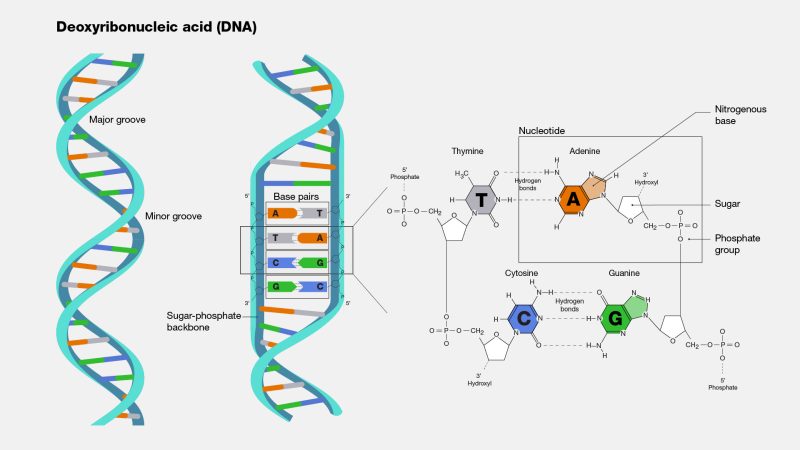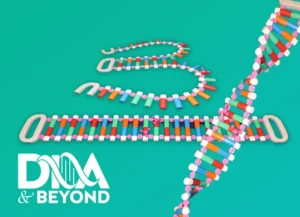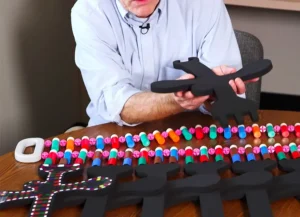The DNA double helix comprises outer building blocks and inner building blocks. These building blocks are joined together to form tiny molecules called nucleotides. The nucleotides in turn come together as chains.
There are two different outer building blocks: one is deoxyribose sugar, abbreviated as “D” and represented in our model by the white ends of each half-rung (white being the color of processed sugar). The other is phosphate molecules, abbreviated as “P”, and represented in our model by the purple balls. Together, they form the two sides of the double helix, alternating in a “D-P-D-P-D-P…” pattern. These outer building blocks do not themselves carry information. That job is left to the inner molecules, shown in the four colors of the rungs (crimson, green, and so on). The P and D provide the all-important structure for holding the letters in place, much like a white board on the classroom wall functions as a framework for the information that the teacher writes on it.
The P and D chains making up the outside of the helix are connected by four inner building blocks (or “letters” of the genetic message): the four bases. These are adenine, thymine, cytosine and guanine, abbreviated “A”, “T”, “C”, and “G”. In our model, each base is represented by a color related to its name: azure-blue (azul in Spanish) for adenine, tangerine or tiger (orange) for thymine, crimson for cytosine and green for guanine. These bases extend inwards from the sides of the helix and connect in the middle with the one opposite to them. They are the rungs of the DNA ladder. Key: in DNA they always pair up according to the same pattern: A connects with T; C connects with G. This is called complementary pairing.



